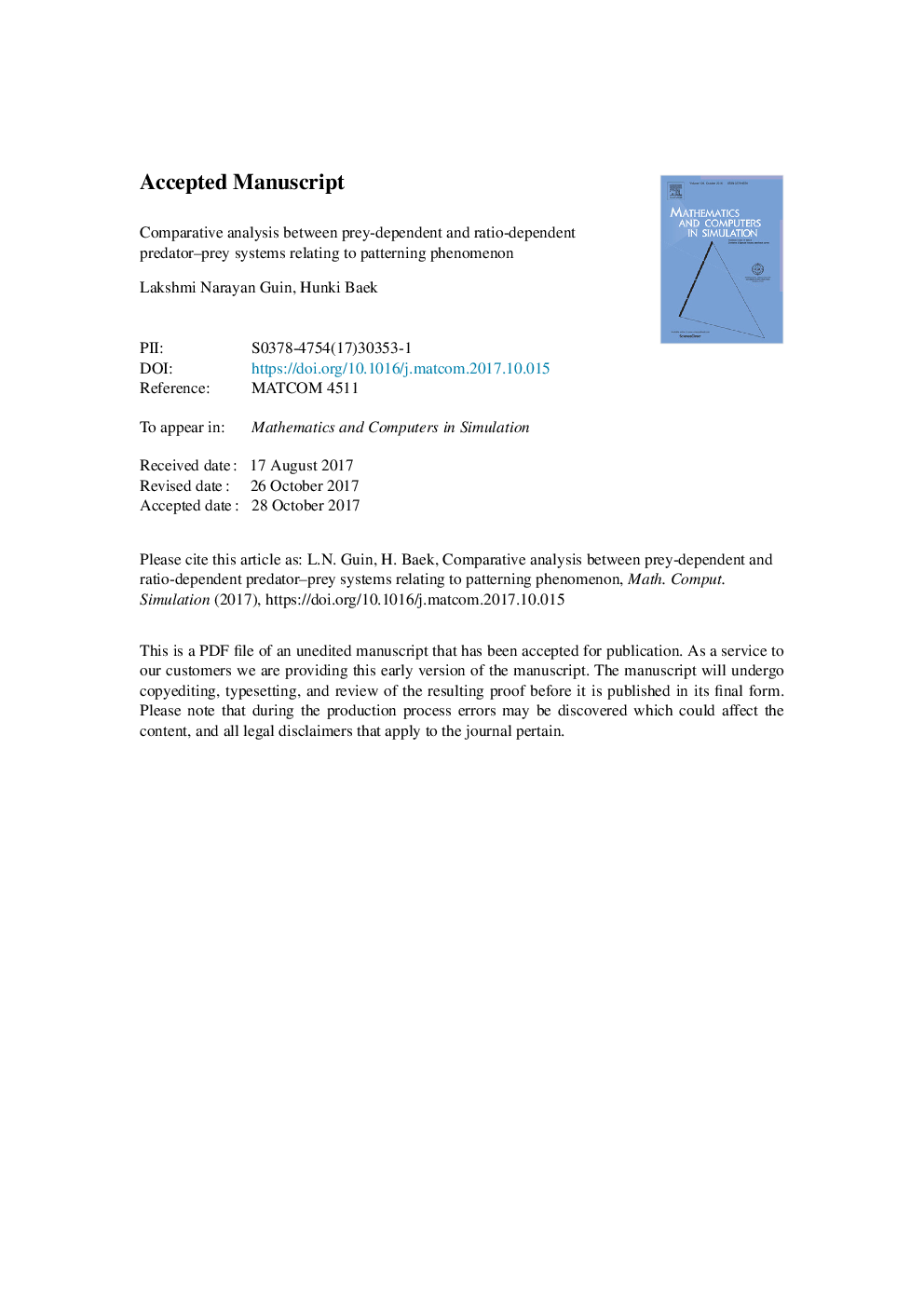| Article ID | Journal | Published Year | Pages | File Type |
|---|---|---|---|---|
| 7543239 | Mathematics and Computers in Simulation | 2018 | 30 Pages |
Abstract
In this paper, we explore two different kinds of reaction-diffusion predator-prey systems with quadratic intra-predator interaction and linear prey harvesting. One has a Holling type II functional response, a typical type of prey dependence, and the other has a ratio-dependent functional response, a typical type of predator dependence. Firstly, by making use of the linear stability analysis and the bifurcation analysis, we obtain the conditions for a Hopf bifurcation of the nonspatial predator-prey systems and for the diffusion-driven instability, so called Turing bifurcation, of the reaction-diffusion systems in a two-dimensional spatial domain. Secondly, we investigate the effects of the intra-predator interaction and linear prey harvesting on these reaction-diffusion predator-prey systems in terms of spatiotemporal pattern formations caused by Turing bifurcation via numerical simulation. In fact, by choosing the intra-predator interaction and linear harvesting rate of the prey species as the bifurcation parameters, we show that these systems undergo a sequence of spatial patterns including typical Turing patterns such as spots, spots-stripes mixture, holes-stripes mixture, holes and labyrinthine pattern through diffusion-driven instability. Our results disclose that the intra-predator interaction and prey harvesting have a significant effect on the spatiotemporal pattern formations of predator-prey systems regardless of the type of functional responses.
Related Topics
Physical Sciences and Engineering
Engineering
Control and Systems Engineering
Authors
Lakshmi Narayan Guin, Hunki Baek,
